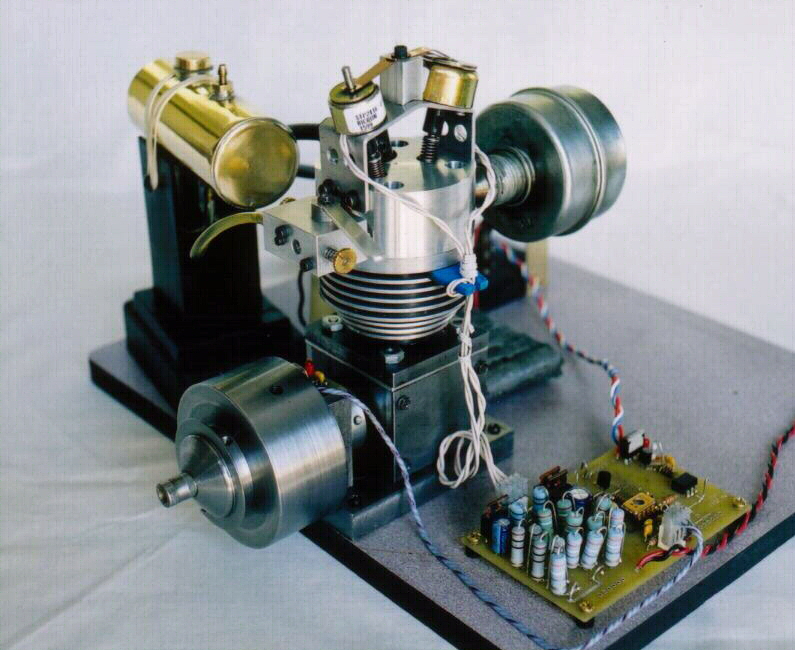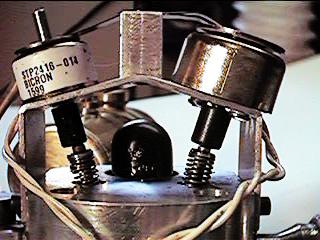

E
lectronic Valve Internal Combustion - 1 cylinder 1" bore 1"stroke
These pictures show the EVIC - 111 Mk1 12.5 cc engine as it appeared in September 2000.
A small Bicron STP2416-014 solenoid operated the intake valve. A larger STP3220-014 solenoid operated the exhaust valve. The valve lifts were in the 0.025" and 0.020" and the engine had a speed range of ~ 2000 to ~ 4500 RPM. The valve timing and spark advance were controlled by a low cost PIC16C505 micro controller.
Development work on this configuration continued for the remainder of 2000 and throughout 2001. By April of 2001 the top speed had exceeded 7500 RPM and by September the engine was producing a modest 0.15 hp at 4500 RPM. The next step was to design lighter valve/solenoid assemblies. This got the unloaded top speed up over 9000 RPM. By December 2001 the power was up to 0.2 hp at 5500 RPM. However, attempts to increase the valve lifts were resulting poor acceleration and unexpected dips the torque curve. These were being caused by the exhaust valve failing to open when load was applied and when the engine was asked to accelerate. At this point in time I didn't really understand these problems and I didn't know how to solve them.
One notable achievement during this time was the development of the "Electronic Throttle", the "ET". The "ET" works by a combination of late exhaust valve closing (LEVC), late intake valve opening (LIVO) and early intake valve closing (EIVC). The combination of LEVC, LIVO and EIVC allows some exhaust gas re-circulation and a reduced intake charge to throttle the engine with low pumping losses. The maximum change in each of the valve timings is ~ 70 degrees between full throttle and idle. All 3 prototype EVIC engines are controlled by an "ET" that uses LEVC, LIVO and EIVC.
A unique feature of this, and all EVIC engines, is the ability to run in an electronically governed Hit & Miss mode. The Hit & Miss feature can be invoked by the flip of a switch. When the speed drops below the setpoint speed, the engine Hits or fires. When the speed increases to above the setpoint, the control latches the exhaust valve open and the engine free wheels or Misses until the speed again drops below the setpoint. For demonstration purposes the setpoint is normally set to 2300 RPM. An additional switch input is used to lower the setpoint to 1800 RPM. Fuel consumption is greatly reduced when the engine idles in Hit & Miss mode.
This engine is used to test new ideas and to demonstrate the EVIC concepts at model engineering shows across North America.